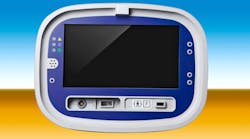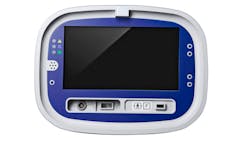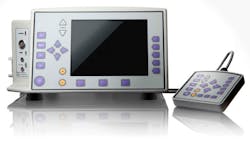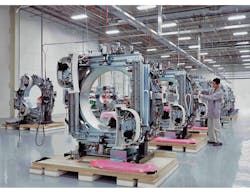Medical devices represent one of the most regulated and controlled sectors of the electronics industry, and the United States’ Food and Drug Administration (FDA) is perhaps the most important regulatory agency in the world.
To understand the FDA’s effect on the medical electronics market, look to the U.S. government shutdown in late 2013. The FDA must approve medical products sold within the U.S. During the shutdown, the FDA narrowed its focus to operations that were essential, such as enforcing regulations and managing cases where there was immediate threat to patient safety.
Related Articles
- Know The FDA's New Guidelines For Medical Device Success
- Know Your Regulations Before Your Design Medical Electronics
- The Internet Of Things Can Save 50,000 Lives A Year
For example, the cancellation of several new application reviews had a significant impact on the cardiovascular sector. The planned review of a new heart sensor was cancelled after months of planning, delaying the deployment of a life-saving piece of technology into 2014.
This file type includes high resolution graphics and schematics when applicable.
The shutdown also prevented the FDA from processing thousands of 2014 applications, which will likely cause delays throughout the sector over the next year. These regulations are so critical, when approvals are delayed, innovation in therapy and medical treatments slows.
The international industry relies on the FDA because its standards are stricter than other international bodies, with a lengthy approval process. This stringent approach, combined with the importance of the U.S. market, has made FDA approval the de facto standard for medical electronics worldwide.
FDA Requirements
Achieving FDA approval is not straightforward. A successful application requires a strict approach in everything from initial design controls, documentation, and reporting through to manufacturing and final quality controls, following QSR and ISO-13485-2003 requirements.
In addition to examining the product, the FDA looks for:
• Design history files (DHF)
• A device master record (DMR)
• Good documentation practices (GDP)
• Solid device history records with traceability (DHR)
• Robust complaint handling and a corrective action system with root cause analysis
• State of the art production controls
• Excellent software and process validation strategy (IQ, OQ, PQ)
• Strong risk management capability
• Tools and methods that affect the product’s performance in clinical use
• Documentation and technical drawings
Unique Challenges
Navigating the regulatory and quality requirements and submissions for medical devices can be daunting. Researchers may invent an innovative device, but might not be well informed about supply chain issues or be able to ensure the standards of their product beyond the lab. But with the proper risk-based approach and the right methodology, this process can be managed.
While regulatory systems can be credited with ensuring high standards of patient safety and device effectiveness, the process of submitting a 510(k) or pre-market approval (PMA) is extremely important. As device complexity increases, medical device companies look for the support of a well-established expert who can help significantly improve the chances of success.
In addition to the demands associated with device approval, the costs associated with certifying and maintaining an FDA-compliant facility can be prohibitive and require a great deal of experienced personnel. Being able to trust a manufacturing partner, such as an electronic manufacturing services (EMS) provider that specialises in medical devices, may allow a company to focus on its core strengths, while also helping with regulations. Medical EMSs have FDA-registered factories and are regularly audited for compliance by a notified body.
If your business is well established, you’ll likely be familiar with the process of developing a medical product, preparing documentation, and meeting regulatory and manufacturing requirements. If not, then the following key points may provide some guidance on navigating the development and release process in practical terms.
Design Phase
Medical device companies must assess the type of certification required for FDA approval. Determining the type of FDA application to file (i.e., a 501k or a pre-market approval (PMA) application) is critical. If a PMA is required, the medical device company must complete the clinical trials, documentation, risk assessments, and other requirements. If there is a predicate device on the market and the product can go to market with a 510k, or if pre-market approval has been achieved, then an experienced medical design firm can be of significant help.
For example, a contract design firm that is experienced with medical product design and has a 13485-2003 design registration can create or help develop the DHF and DMR (Fig. 1).
The same company also can develop a more robust supply chain, an important consideration given that most medical products and devices have a longer life in the market than other products. Also, the FDA requires products to be supported for an extended period of time even after they are no longer for sale in the marketplace. EMS and design companies experienced with medical product design and documentation can leverage prior experience with medical device design, manufacturing, supply chain management, and FDA regulatory requirements.
Compliance In Manufacturing
For a smaller company, establishing a 13485-2003-certified medical facility requires a substantial investment. A larger company may not have a certified or FDA registered facility in the right location. Both small and large companies should strongly consider finding a manufacturing partner to assist with manufacturing in the location that meets the needs for technology, supply chain and duties, or tariffs.
A good EMS provider will have the certified facilities necessary to meet the FDA’s standards, as well as leverage its supply chain management and manufacturing expertise. Its FDA audit histories should be reviewed as part of a comprehensive assessment process.
Alternatively, companies may have an EMS provider manufacture subassemblies while the medical OEM assembles and tests the finished product. The OEM is the manufacturer of record with the FDA but still benefits from leveraging the supply chain, process, and regulatory expertise of the EMS provider.
Product Repair And Logistics
When considering the repair and logistics for medical products, two factors (particularly for small companies) must be considered. First, medical products must be supported for up to 15 years after launch, which includes repair or redesign if components become obsolete. Second, a medical company may not have a complete global footprint for servicing, hubbing, or forwarding a product for repair.
Many companies contract with a third-party logistics (3PL) partner to support aftermarket repair, refurbishment, and logistics services. However, most of these 3PL providers do not carry a medical certification for manufacturing. They also may lack the IT tools to maintain complete component traceability. Some EMS providers have started offering medical forward and reverse logistics services (Fig. 2).
Forward logistics include build to order (BTO), configure to order (CTO), and hubbing services. Reverse logistics involves diagnosis, repair, refurbishment, software upgrades, and, in some cases, redesign and component obsolescence services. Often, there is a “hub and spoke” service model, in which locations around the world provide local diagnosis, perform simple repairs, and forward the product back to a “hub” location for more complex repairs.
Summary
The FDA approval and overall regulatory management process is challenging. Companies specializing in medical product engineering, manufacturing, and logistics services can offer extensive design, supply chain, and manufacturing services to both large and small medical device companies (Fig. 3).
Assess your needs and factors impacting time-to-market. Look for design and manufacturing companies with the experience, regulatory discipline, and footprint that can really complement the capability you already have.
Robert O’Rourke is senior vice president of business development for Europe at Sanmina. He joined the company in 2008, where he has also served as vice president of operations and general manager of the Fermoy, Ireland design and manufacturing facility and vice president of worldwide business development for its medical division. Previously, he worked at Tyco Fire & Security and Exel. During that time, he held management positions including director of global operations and director of logistics, planning, and customer service EMEA. He received his BBS in business, finance, and management from University College Cork.




